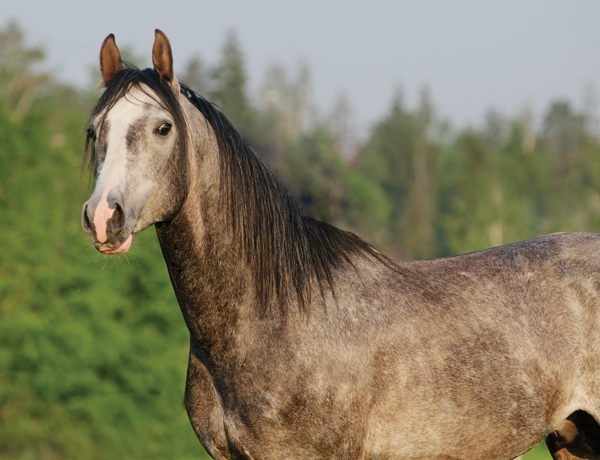
Horses coexist as herd animals with complex social relationships that depend on visual and auditory cues to tell friend from foe in their environment. Their complicated system of visual cues are a type of body language that keeps them in constant communication with the ever-changing moods of the members of the herd. Subtle cues, such as those of different horse ear positions, are a fundamental form of communication that contributes to maintaining a class system within the herd without having to escalate to a fight for dominance.
Most horses are very in tune with the body language of the alpha and their herd mates. The subtlety of specific ear positions sends a very clear message to other horses that can easily be interpreted by their humans, as well. Learning the subtleties of equine body language provides you with an important key to successful interaction with horses. You have only to become a keen observer to these visual cues to become aware of the message that they send.
A single flick of an ear can transmit several different messages in unison when taken with other body language cues. A horse cannot communicate without using his ears to convey part of the message. Horses communicate directly through posture, gesture and expressions. Learning to interpret ear positions, and physical postures in general, is not a mystical skill, but an education in observation.
Ears Forward
When a horse’s ears are pricked forward, it conveys that he is alert, paying attention, or interested in what is in front of him. He might be saying:
◆ I am focused on something in front of me.
◆ I am happy to see you.
◆ I am interested and curious.
◆ I am on alert.
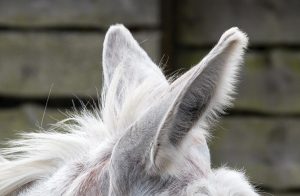
One Ear Cocked Back
This is often indicative of a horse that is listening to something in another direction than out front or paying attention to what is being asked of him while maintaining alertness in the direction of travel. He might be saying:
◆ I am listening to my rider.
◆ I am paying attention to something behind me.
◆ There is something that has my interest to the side of me.
◆ I am aware of things in both directions.
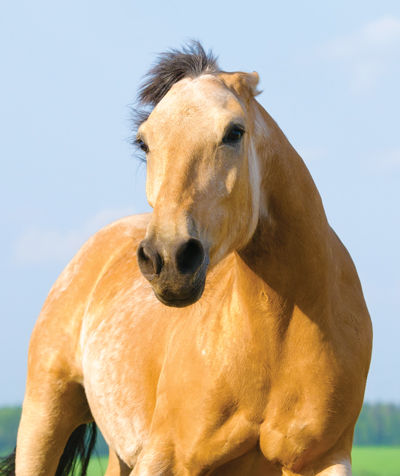
Ears Pinned Flat To the Head
This is a well-known sign of dominance or aggression that is usually accompanied by neck snaking, head shaking, drawn lips and bared teeth. Your horse might be
trying to say:
◆ I am going to bite or kick you! Get out of here!
◆ That is my food, go away.
◆ I don’t feel well; leave me alone.
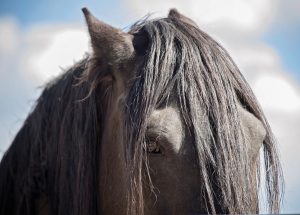
Ears Turned Back
If the horse’s ears are pointed backward but not pinned, it means he is listening to something behind him. If you are riding and his neck is tense, he may be unsure of what you are asking him to do. He may be deciding how to react to the stimuli and whether to run away or turn around and check out a sound or movement. When combined with a swishing tail or other signs of tension in the body, turned-back ears may be a precursor to pinned ears. Your horse might be saying:
◆ How do I react? What is that behind me?
◆ I am unsure what you are asking, or I am confused.
◆ I am nervous.
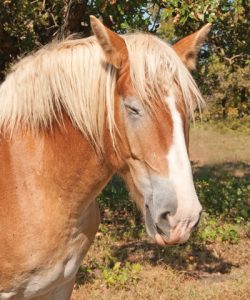
Ears Relaxed To the Side
The horse is asleep, relaxed or feeling lazy. If you are riding your horse, then he may be showing complete trust and relaxation. Your horse could be saying:
◆ I am content or sleepy.
◆ I am just relaxing right now.
◆ I am concentrating or daydreaming.
◆ I trust you.
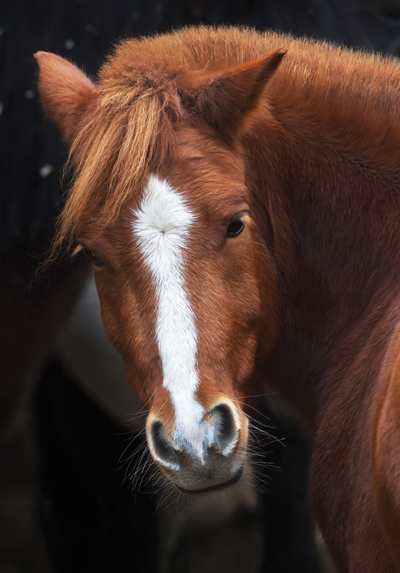
Ears Flicking Back and Forth
The horse is in a heightened state of alertness or anxiety. He may be trying to
find the source of an unusual sound or smell or may feel overwhelmed, upset or
anxious. He might be trying to say:
◆ I don’t know what to make out of that strange sound.
◆ I am worried! What is that? How should I react?
◆ Fight or flight? How can I get away quickly?
◆ I may be on the verge of panic.
This article about horse ear position appeared in the July 2020 issue of Horse Illustrated magazine. Click here to subscribe!






When my horse walks up to me in the pasture, he is glad to see me, but his ears are always back. The ears are not pinned but firmly back. It doesn’t matter if there are other horses in the pasture or not, so he is not listening. Several people have misinterpreted his look as aggressive, but he is happy and asking for rubs, a big puppy. Any idea why he does this?
Human animals, humans,herbal especies,and no human animals, have different morfology and phenotips differences, that the ID , and actituds particular for only one individual specific alive specimen